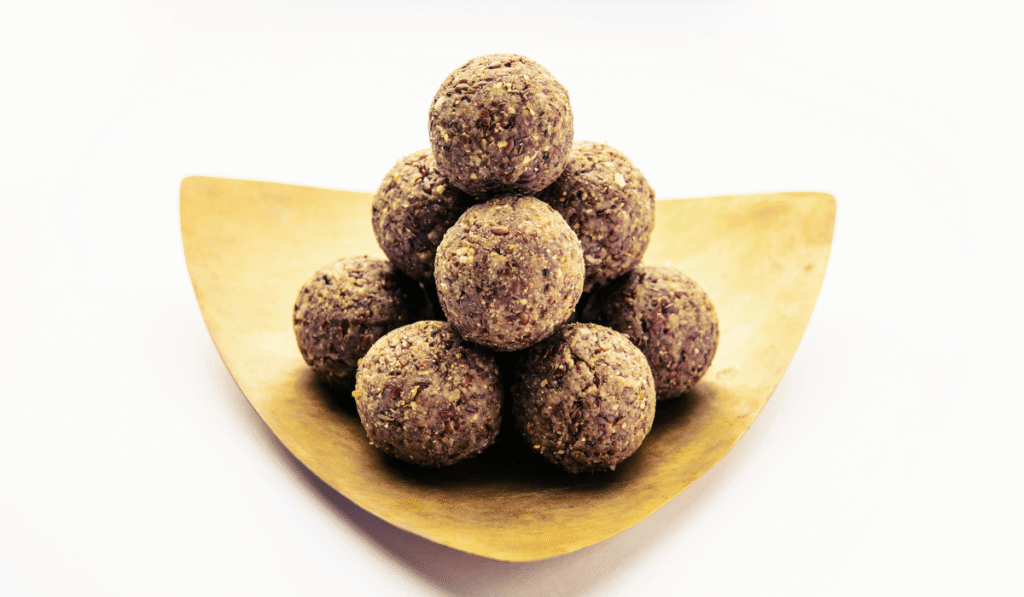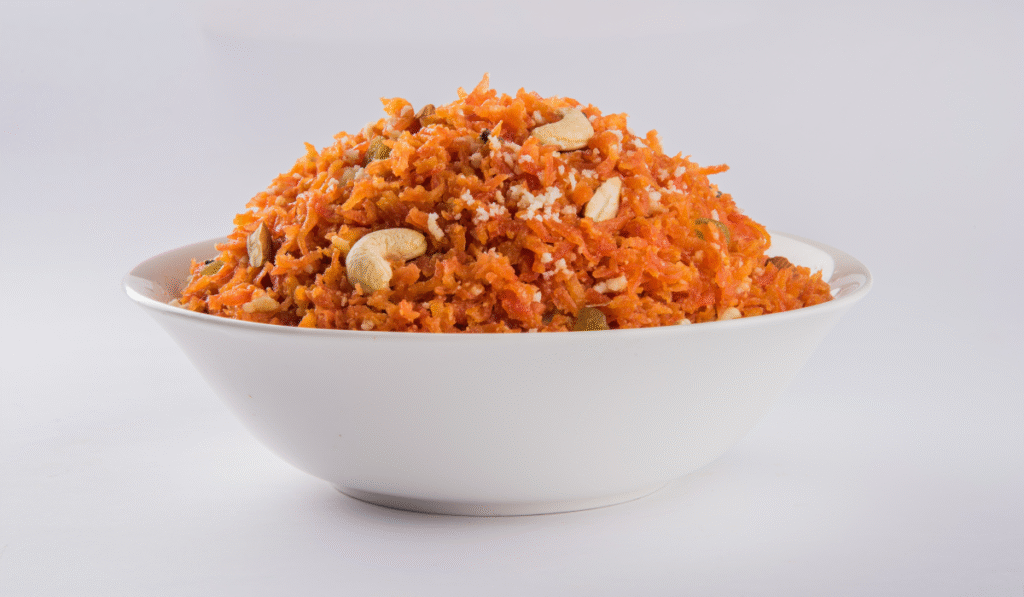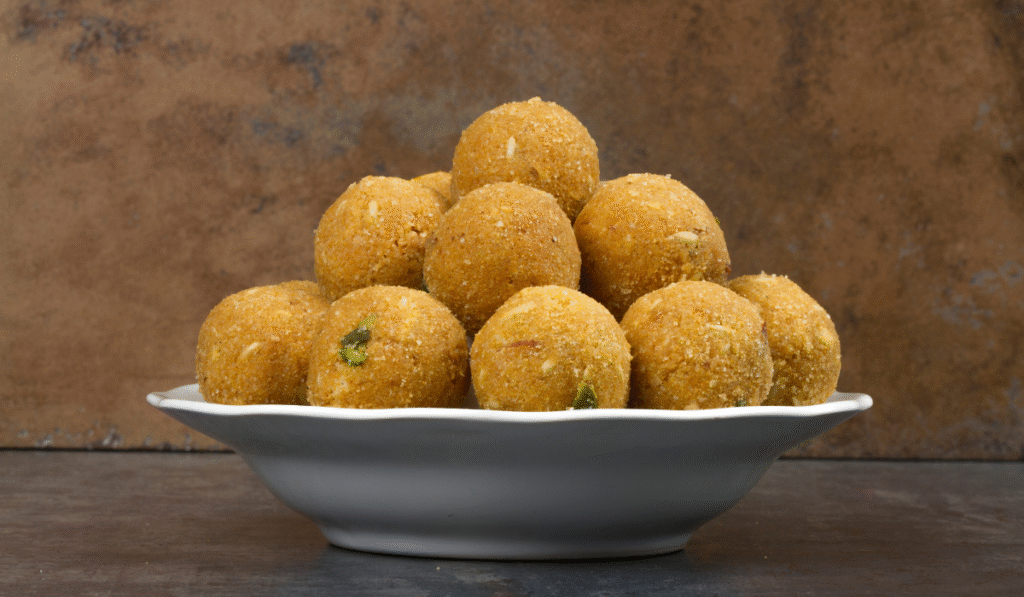Winter brings its own kind of comfort. Although it gets difficult to enjoy if your body doesn’t love winter. But if you grew up in an Indian home, you know winter isn’t just about sweaters and sunshine, it’s about dadi and nani’s kitchen magic.
Their homemade winter foods are not just delicious. They are packed with Ayurvedic goodness that keeps the body warm, strong, and happy. So, let’s dive into some traditional winter foods for warmth and Immunity that truly define an Ayurvedic winter diet and still make perfect sense in today’s healthy living.
Key Insights Before You Begin
- Traditional Indian winter foods naturally support body warmth and immunity.
- Ayurveda recommends richer, nourishing foods in winter because digestion is stronger.
- Ingredients like ghee, jaggery, gond, nuts, and bajra protect energy and joint health.
- Grandma’s recipes like pinni, panjeeri, and saag offer real nutrition with comfort.
- These foods are easy to include in daily meals as healthy winter food ideas.
6 Winter Foods for Warmth and Ayurvedic Benefits
These classic homemade picks are more than comfort food because each one carries Ayurvedic warmth and real health benefits that keep your body strong through the cold. Here are the best winter foods for warmth that still feel like home.
1. Pinni

Every Indian knows what pinni is. Made from wheat flour, ghee, jaggery, and dry fruits, pinni is the original energy bar our grandmothers mastered long before fitness brands did. And, no, it’s not just fat and calories. It is much healthier and energizing than you can imagine.
Ayurveda explains that ghee balances vata, the dosha that increases in cold weather, while jaggery helps improve digestion and boost energy levels. A small pinni in the morning keeps your body warm, supports joint health, and gives you lasting strength throughout the day.
2. Panjeeri
Panjeeri is the best winter food for warmth from the grandma’s kitchen. It’s made with whole wheat, dry fruits, gond (edible gum), and ghee. They are roasted slowly until golden and aromatic. Ayurveda praises it for improving stamina and strengthening the body’s defense system.
Rich in healthy fats, protein, and iron, panjeeri supports new mothers, children, and elders alike. It’s one of the best healthy winter food ideas because it balances nutrition with comfort. You can enjoy a spoonful with warm milk or eat it plain as a mid-evening snack.
3. Gond Ke Laddoo
If you’ve ever seen your grandmother frying gond until it puffs up like popcorn, you know something special is coming. Gond ke laddoo are made with edible gum, ghee, wheat flour, and nuts. The dream team of Ayurvedic winter warmth.
Ayurveda values gond for its ability to lubricate joints, improve stamina, and protect against seasonal flu. It’s especially great for people who often feel weak or tired during cold months. Just one laddoo a day keeps your energy high and your bones strong.
4. Saag of Green Leafy Vegetables
Every North Indian household knows that winter isn’t complete without saagi. For example, sarso da saag, the mustard greens used in saag, are rich in iron, calcium, and vitamin K. According to Ayurveda, mustard leaves help improve digestion and circulation, both essential during cold weather.
Pairing it with makke di roti adds complex carbs that keep you full for longer. Add a little white butter, and you have a wholesome, warming meal that satisfies both hunger and heart. And if you don’t like the taste of sarso (which is unlikely), you can also eat spinach and methi leaves as saag. They are also one of the best ayurvedic winter diet foods.
5. Bajra Khichdi
Bajra, or pearl millet, is one of the best grains to include in your Ayurvedic winter diet. It’s packed with fiber, magnesium, and antioxidants. Ayurveda says bajra generates internal heat and balances kapha dosha, which tends to increase in winter.
A bowl of warm bajra khichdi with ghee, moong dal, and cumin is not only comforting but also easy to digest. It keeps your body temperature stable and gives you long-lasting energy for chilly days. So, you can enjoy winter without shivering.
6. Gajar Ka Halwa (Gajrela)

No winter menu is complete without gajar ka halwa. Fresh red carrots are prime in winter, slow-cooked in milk and ghee, with sugar and nuts sprinkled on top. It’s nostalgia in a bowl. Carrots are rich in beta-carotene and antioxidants, which Ayurveda links to better vision and stronger immunity.
Ghee adds healthy fat that nourishes your skin and joints, making this dessert both delicious and functional. It’s a perfect reminder that comfort food can be healthy too. And it tastes just heavenly when cooked by our moms.
Can Ayurveda Winter Diet Really Boost Immunity?
According to Ayurveda, winter is a season when the body’s digestive fire (agni) is at its strongest. That’s why rich, nourishing foods like ghee, jaggery, nuts, and millets are perfect choices.
These ingredients help maintain body heat, improve immunity, and protect against seasonal fatigue. So, when you eat pinni or sip hot milk with panjeeri, you’re not just enjoying the taste, you’re following centuries-old wisdom designed to help you thrive through the cold.
Conclusion
Today, we question our own roots, when every solution is often found there. And not just Ayurveda, research done by experienced doctors also says that our health is totally dependent on what we eat.
So, always believe your grandmother because her kitchen wasn’t just a place of love. It was a mini Ayurvedic lab. Every pinni, laddoo, and paratha carried the science of warmth, nourishment, and balance.
This winter, try bringing those traditions back. Stock your pantry with jaggery, ghee, and whole grains. Cook with love, eat slowly, and enjoy the cozy goodness that keeps you warm both inside and out.
Let’s stay connected! Come say hi on Instagram or follow us on Facebook for daily inspo.












